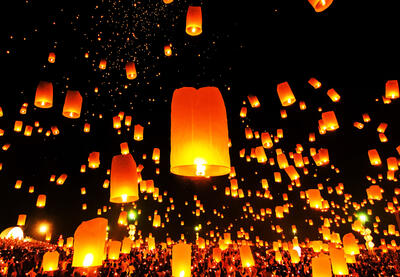It had been only a few weeks since my son started kindergarten, and I was trying to get familiar with the public school system, since I didn’t grow up in the United States. In India, I’d attended a boarding school with children from all over the world, and now my son was the only Indian child in his classroom.
One of our main festivals, Diwali, was coming up, and I debated whether I should approach my son’s teacher to suggest a discussion about it in his classroom. I felt it was important to support an acknowledgement of my son’s Indian culture and heritage among his new peers. For those of you who may be unfamiliar with Diwali, this Festival of Lights is celebrated by more than a billion people all over the world, from Fiji to Guyana and India to Indonesia—it is now even recognized as a holiday by many schools in New Jersey and Texas.
While the festival’s origins are Hindu, people of many faiths celebrate it. Hindus celebrate Diwali to welcome Lord Rama after his victory over the evil Ravana and to receive the blessings of Lakshmi, the goddess of wealth. Sikhs celebrate it as the day of the release of their sixth Guru, Hargobind, from captivity by the Mughal Emperor Jahangir. Jains and Buddhists also celebrate Diwali. For followers of these faiths, the festival marks the day Lord Mahavira, the last of the Jain Tirthankaras (spiritual teachers), achieved enlightenment and the day the great Emperor Ashoka embraced Buddhism as his faith.
Teachers, as you draw up your calendar each school year, do take time to consider which holidays and cultures are being acknowledged in your classroom and in the wider school building.
After overcoming my hesitation about raising Diwali with my son’s teacher, I asked her if she’d be interested in having a discussion about India and Diwali in her classroom. To my relief, she was very encouraging and supportive. We picked a date.
I gave the children an overview of India and its diversity. Then I read Diwali: A Cultural Adventure, an engaging story about the mythology behind the festival and the values of kindness, generosity and courage. I brought clay lamps from a local Indian grocery store, and the children decorated them with glitter glue “jewels.” At the end, all the students lit up their lamps with battery-operated tealights.
My son’s eyes glowed with pride the entire time—I saw the joy and confidence in him. That day, he was an expert. He talked with excitement about lighting the diyas (the lamps) at home, the anticipation of the sparklers later in the evening and the delicious food we feast on. Other students were enthralled by the story of the 10-headed demon Ravana and the brave prince, Rama. They loved decorating their clay lamps and greeting each other, “Happy Diwali!”
My son is in third grade now. I have been invited to discuss Diwali in my son’s classes over the last three years, and it is something he looks forward to every year. Over the past few years, I have spoken to many South Asian parents who have led similar teach-ins in their children’s classrooms. They’ve used a wide variety of age-appropriate arts and crafts activities. They’ve brought cookies. Some have even made PowerPoint presentations.
Teachers, as you draw up your calendar each school year, do take time to consider which holidays and cultures are being acknowledged in your classroom and in the wider school building, whether they’re recognized officially or just among the children. Students will benefit greatly from learning about diverse cultures and traditions from all over the world.
If you are not able to have a parent offer a Diwali teach-in, you can rely on plenty of online resources, such as this Diwali Storytime Guide. Produced by KitaabWorld, an organization that supports inclusion of South Asian culture in the classroom, the guide provides a list of books about Diwali. Use them in your classroom to share stories and ideas for arts and crafts.
An alternate, multicultural approach could also be to have students reflect on the role lights play in most holiday traditions. For example, setting up Christmas lights, lighting the Menorah, making fanoos lanterns for Ramadan, lighting lamps in Diwali and candle lighting during Kwanzaa all illustrate the central nature of light in traditions around the world.
As our classrooms become more diverse, it is important to find ways to acknowledge and include a multitude of cultures and customs in the classroom. How will you recognize Diwali with your students this year?
Manglik is the founder of KitaabWorld.com, an online platform which advocates for representation of South Asian children’s literature in the mainstream through curated content.
